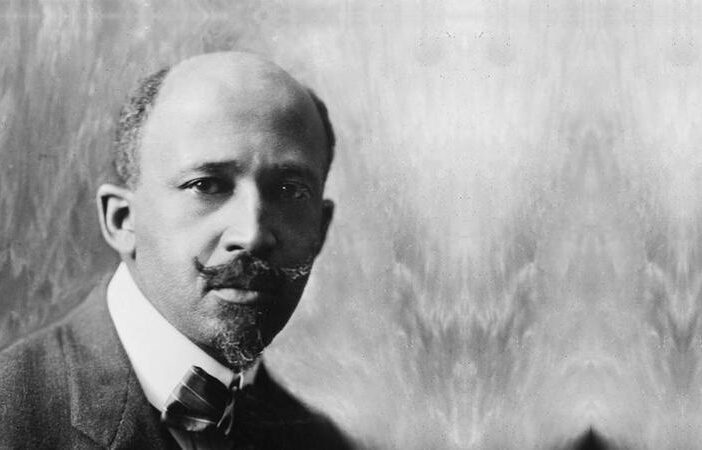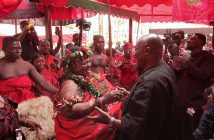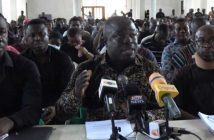William Edward Burghardt Du Bois was an African-American civil rights activist who became a citizen of Ghana in the 1960s. Born in Great Barrington, Massachusetts, Du Bois grew up in a relatively tolerant and integrated community, and after completing graduate work at the University of Berlin and Harvard, where he was the first African American to earn a doctorate, led him to believe that his life acquired its only significance through its participation in what he called “the Negro problem,” or later “the race problem” earned him the title the father of Pan Africanism.
As the father of pan Africanism, William Edward Burghardt said, “the cost of liberty is less than the price of repression.” This statement rightly reflects on this great man’s fight for slavery and racism to be eradicated from this world.
Along the line, he became a professor of history, sociology and economics at Atlanta University as well as, one of the founders of the National Association for the Advancement of Colored People (NAACP) in 1909.
Du Bois was an activist, a journalist, a historian and a sociologist, a novelist, a critic and a philosopher but it is the race problem that unifies his work in these many domains.
Contributing to the specifically philosophical understanding of race and its problem, he treated these themes as objects of philosophical consideration, leading to the introduction of many contemporary philosophers appreciating race and race-related concerns as fruitful topics of philosophical reflection.
Through his work in social philosophy, political philosophy, and the philosophy of art, Du Bois, for all intents, invented the field of philosophy and race, thereby unsettling and revising our views of the proper scope and aims of philosophical inquiry.
He opposed the Atlanta compromise, an agreement crafted by Booker T. Washington which provided that Southern blacks would work and submit to white political rule, while Southern whites guaranteed that blacks would receive basic educational and economic opportunities. Instead, Du Bois insisted on full civil rights and increased political representation, which he believed would be brought about by the African-American intellectual elite. He referred to this group as the Talented Tenth, a concept under the umbrella of Racial uplift, and believed that African Americans needed the chances for advanced education to develop its leadership.
It is because of Du Bois and others like him, that globally most elites, great leaders are African Americans. Though, the world has a long way to go in terms of acceptance of different race by “whites”, all would agree this agreement is better than before. Now all enjoy full civic rights regardless of the colour or race in most countries.
Racism was the main target of what Du Bois’s stood for, and he strongly protested against Jim Crow laws, and discrimination in education and employment. His cause included people of color everywhere, particularly Africans and Asians in colonies.
He was a proponent of Pan-Africanism and helped organize several Pan-African Congresses to fight for the independence of African colonies from European powers. Du Bois made several trips to Europe, Africa and Asia. After World War I, he surveyed the experiences of American black soldiers in France and documented widespread prejudice and racism in the United States military.
As an author of 43 books and an activist of civil rights, this African- American, helped form the “Niagra Movement (1905-10), a forerunner of the National Association for the Advancement of Coloured People (N.A.A.C.P), which called for full political, civil and social rights for African-Americans. He also became editor of the N.A.A.C.P publication, the Crisis.”
Du Bois also inspired the organization of several Pan African Congresses between 1919 and 1945.
It was during his fight for equality for Africans and Asians, that he visited Ghana and became a citizen in the 60s. The home which was gifted to him by the late President of Ghana, President Kwame Nkrumah, was turned into a library to commemorate him, after his death.
The centre, where he and his wife once lived, and where they are now buried, houses his personal library, a small museum with a handful of personal effects such as his graduation robes. The couple’s mausoleum is surrounded by Asante stools, a seminar room, a restaurant, a gallery, an amphitheatre and a research centre for Pan-African history and culture
This centre is clad with, black and white original photographs showing a panorama of his life with pictures of icons such as Malcolm X, President Kwame Nkrumah, Paul Robeson and Dr. Martin Luther King Jr.
Today, visitors can see the living quarters, including the sunken bath created so the 93-year-old icon could step into it comfortably. Noted too are the tributes to his family, first wife Nina, and then Shirley Graham-DuBois, and children Burghardt and Yolande.
REFERENCES:
1. Nayaba Arinde(2019), the beauty and importance of the W.E.B DuBois centre for Pan- African culture, Amsterdam news.
2. TimeOut(2013), the W.E.B DuBois Memorial centre.
3. Available online at, https://plato.stanford.edu/entries/dubois/#DuBoisLifeMajoPubl.





